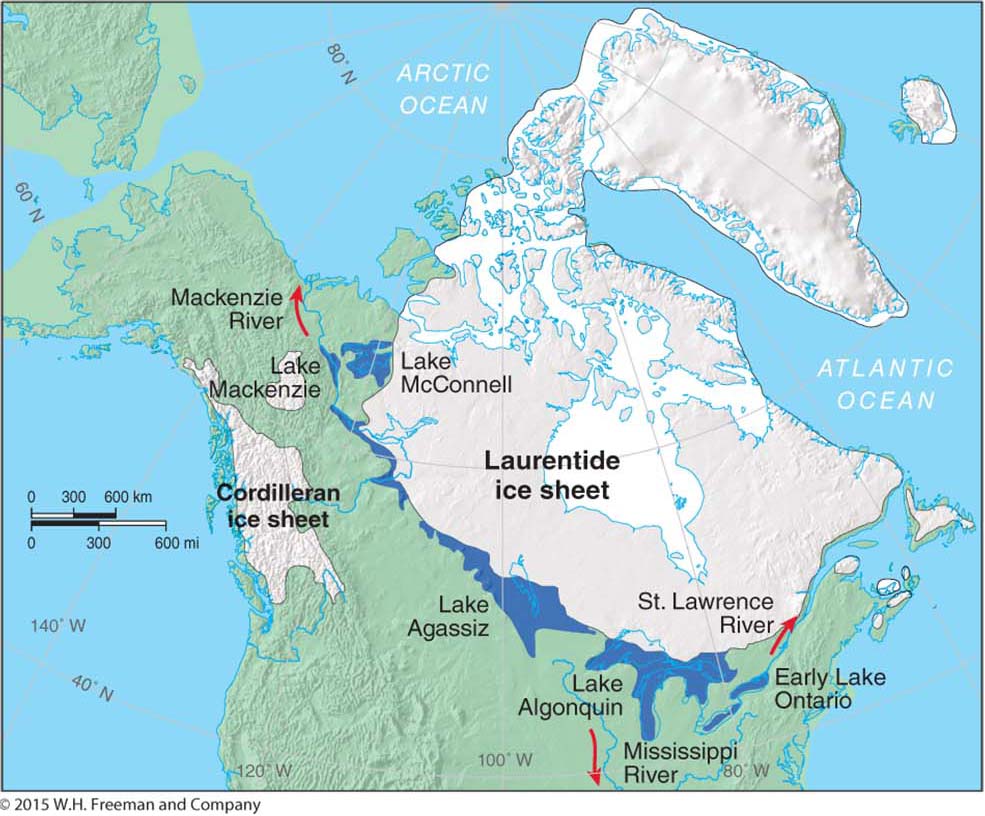
Figure 6.8
Laurentide ice sheet. At its maximum extent 20,000 years ago, the Laurentide ice sheet covered much of Canada. As it melted in response to Milankovitch forcing, the meltwater flowed out the St. Lawrence River, the Mississippi River, and the Mackenzie River, adding fresh water to the oceans into which it flowed. At times during the melting process, ice dams created huge inland lakes (such as those shown here). Scientists hypothesize that ice dams broke repeatedly over time and released massive pulses of fresh water into the North Atlantic Ocean. These pulses slowed or stopped the ocean conveyor belt system and caused cooling events such as the Younger Dryas.